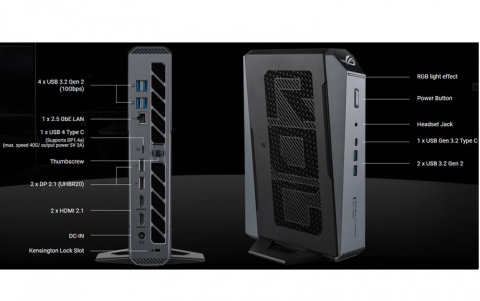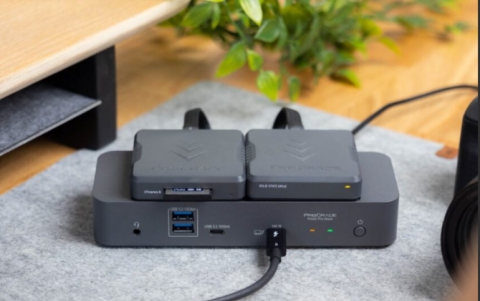
IBM 'Pixie Dust' Enlarges Disk Drive Capacity
IBM announced Monday that it would be the first to mass-produce computer hard disk drives using what it describes as a revolutionary new type of magnetic coating that potentially quadruples storage capabilities
Dubbed "pixie dust" by IBM scientists, the process places a three-atom-thick layer of the element ruthenium, a precious metal similar to platinum, between two magnetic layers, which allows disk density to far exceed current levels.
IBM says the technology will allow disk drives to reach the 100-gigabit-per-square-inch storage capacity that industry experts have been predicting for the last two years.
The magnetic layer, developed by IBM scientists at the Almaden Research Center in San Jose, California, is formally known as "antiferromagnetically-coupled media" or AFC. A very tiny amount of the material is needed to prevent data from being lost in high-density disks.
AFC counteracts the "superparamagnetic effect" -- which is when magnetic regions on the disk become too small to retain their magnetic orientation. Scientists predicted that this would happen at current product density -- 20 to 40 gigabits per square inch.
AFC overcomes this limitation, essentially breaking the hard disk drive size barrier, the company said.
Some analysts, however, were not impressed with the announcement, saying that other companies have already been working with AFC and that the technology is neither exclusive to IBM or unexpected in the industry. But some observers said it is noteworthy that IBM is shipping products with AFC technology now.
An IBM spokesperson told news sources that the company three weeks ago began shipping drives that can store 25.7 gigabits of data per square inch, but chose not to publicize AFC for competitive reasons. IBM officials said Travelstar drives, to be shipped later this year, are expected to have 33 percent more storage capacity, and drives with at least 100 gigabit capacity are possible by 2003.
IBM forecasts that using AFC media, 100 gigabit data density would allow for desktop drives with 400GB, equal to the information in 400,000 books, within the next two years.
Notebook drives could leap up to 200GB, where 20GB today is top-of-the-line. IBM's one-inch Microdrive could grow to 6GB or 13 hours of MPEG-4 compressed digital video (about eight complete movies) for handheld devices. The disk drive news follows IBM's announcement of new computer transistor technology involving carbon nanotubes, elongated molecules about 50,000 times thinner than the diameter of a human hair, which could significantly accelerate computer processing speeds.
IBM also announced recently that it is embarking on a multi-year, multibillion-dollar effort to build computers and networking systems that can monitor and repair themselves with no human intervention.
AFC counteracts the "superparamagnetic effect" -- which is when magnetic regions on the disk become too small to retain their magnetic orientation. Scientists predicted that this would happen at current product density -- 20 to 40 gigabits per square inch.
AFC overcomes this limitation, essentially breaking the hard disk drive size barrier, the company said.
Some analysts, however, were not impressed with the announcement, saying that other companies have already been working with AFC and that the technology is neither exclusive to IBM or unexpected in the industry. But some observers said it is noteworthy that IBM is shipping products with AFC technology now.
An IBM spokesperson told news sources that the company three weeks ago began shipping drives that can store 25.7 gigabits of data per square inch, but chose not to publicize AFC for competitive reasons. IBM officials said Travelstar drives, to be shipped later this year, are expected to have 33 percent more storage capacity, and drives with at least 100 gigabit capacity are possible by 2003.
IBM forecasts that using AFC media, 100 gigabit data density would allow for desktop drives with 400GB, equal to the information in 400,000 books, within the next two years.
Notebook drives could leap up to 200GB, where 20GB today is top-of-the-line. IBM's one-inch Microdrive could grow to 6GB or 13 hours of MPEG-4 compressed digital video (about eight complete movies) for handheld devices. The disk drive news follows IBM's announcement of new computer transistor technology involving carbon nanotubes, elongated molecules about 50,000 times thinner than the diameter of a human hair, which could significantly accelerate computer processing speeds.
IBM also announced recently that it is embarking on a multi-year, multibillion-dollar effort to build computers and networking systems that can monitor and repair themselves with no human intervention.













